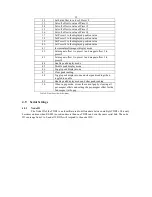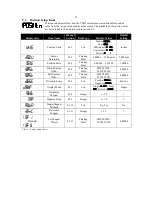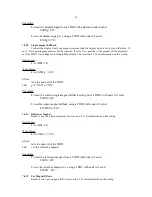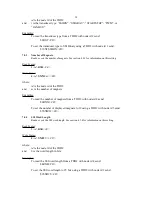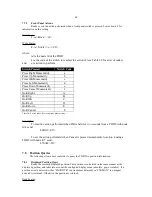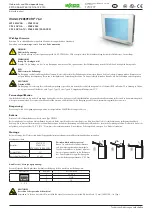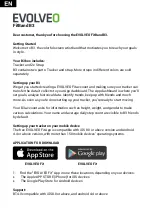
29
7 Serial Communications
The TDD2 can communicate with any device capable of RS-232 or RS-485 communications at
9600 or 19200 bps with 8-bit words, no parity bit, and 1 stop bit. A simple ASCII communications protocol
is used.
Communications are always half duplex meaning that only one device, master or slave, transmits at
a time. The master always sends a command and then the slave (TDD2) responds. The master must wait for
the response before transmitting the next command.
All messages to the TDD2 must start with ‘$' and the node ID of the TDD2. All good responses
from the display start with ‘*’. All messages are terminated with a single carriage return
ASCII 13
(indicated by ‘<CR>’ in the text). All commands are case sensitive.
The node ID of the display defaults to 1. This can be changed via the serial link or the front panel.
All displays will respond to a node ID of 0 regardless of their own Node ID setting. When the TDD2 is used
in a multi-drop serial configuration each TDD must have a unique Node ID from 1 to 9.
When setting configuration items that accept a string response (i.e. the transducer type), only
enough of the string to differentiate it from all other acceptable choices needs to be sent.
7.1
TDD2 WinComm
The TDD2 WinComm software package is available to assist configuration of the TDD2 from a
Windows PC. TDD2 WinComm communicates with a TDD2 via the serial interface and is able to set and
read all of the setup items listed in this manual. Display configuration can also be saved to a file for later
use. A copy of TDD2 WinComm may be downloaded free of charge from the Rapid Controls website:
www.rapidcontrols.com.
A CD version of TDD2 WinComm is also available: contact Rapid Controls for information on
purchasing TDD2 WinComm on CD with an accompanying serial cable.
7.2
Write protection
7.2.1
Write Enable
Turns off the write protection so that changes may be made. This command is required before most
of the setup values can be changed. The write protection will remain off until power is cycled or the write
protect command is issued.
Write Syntax:
$
<id
>
WE
<CR>
where:
id
is the node id of the TDD2
7.2.2
Write Protect
Turns on the write protection so that any further changes are blocked.
Write Syntax:
$
<id
>
WP
<CR>
where:
id
is the node id of the TDD2





